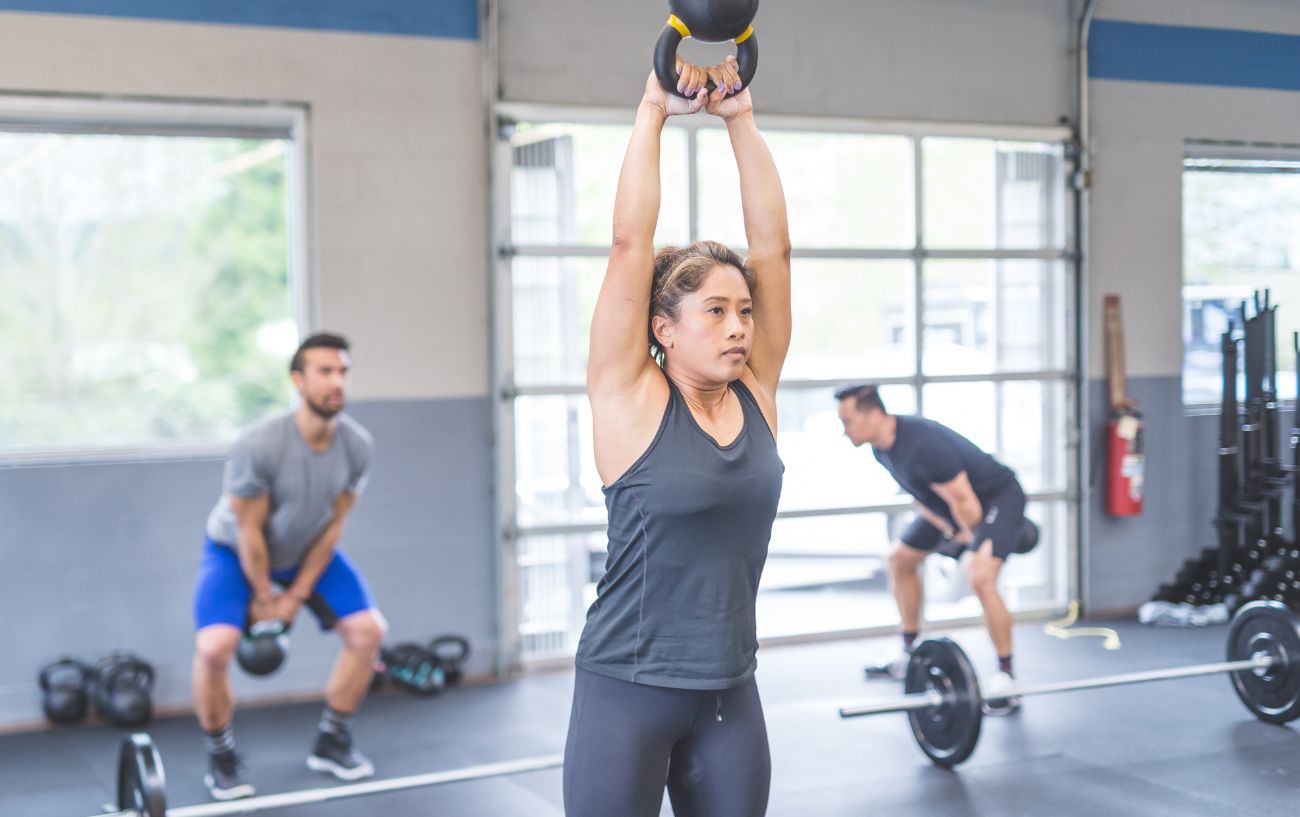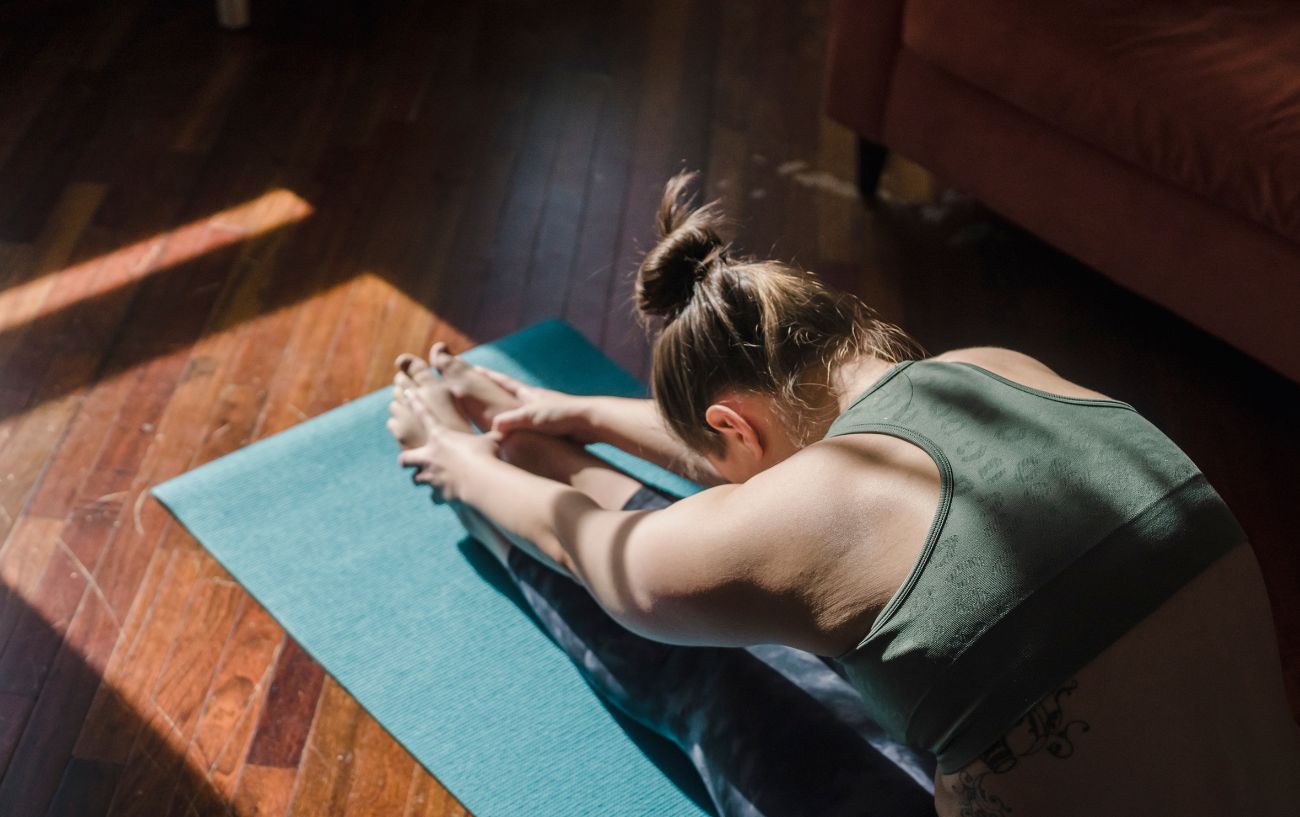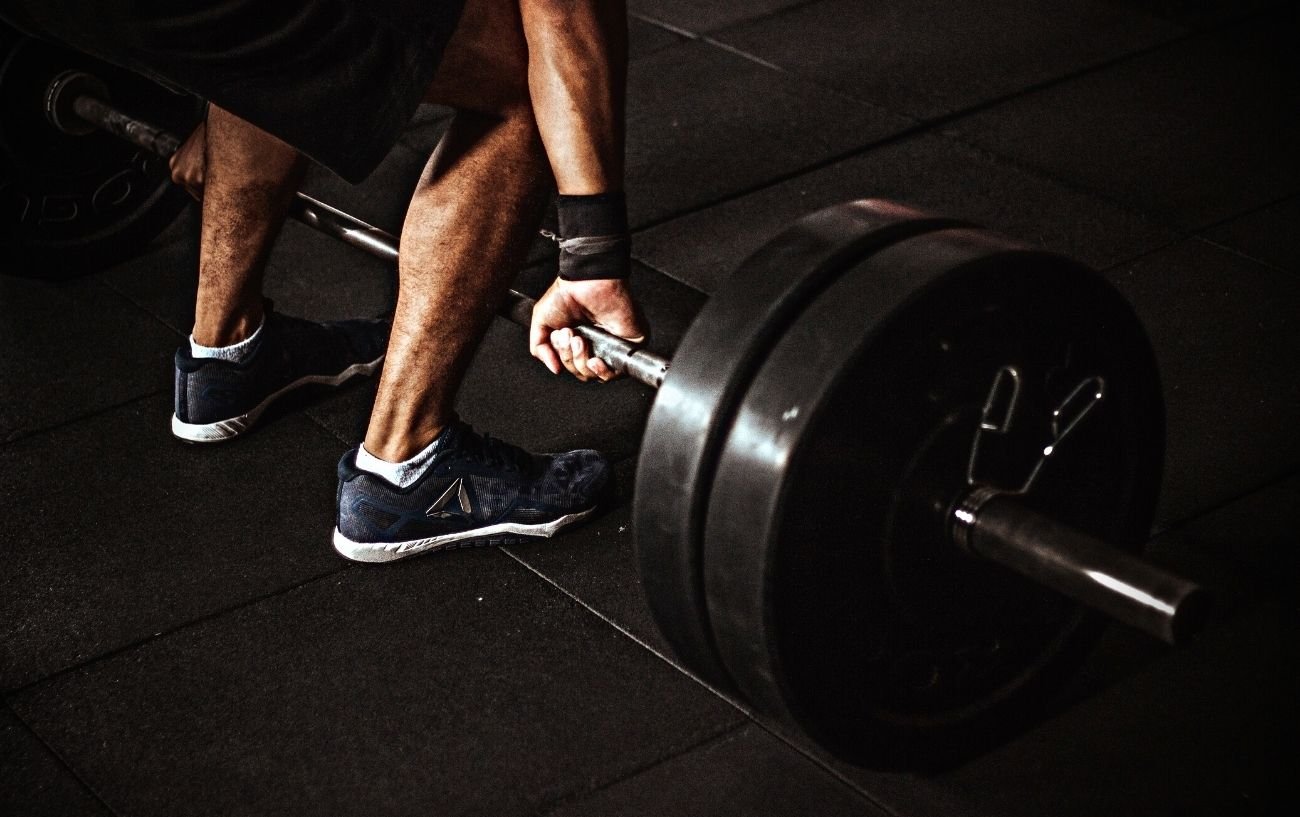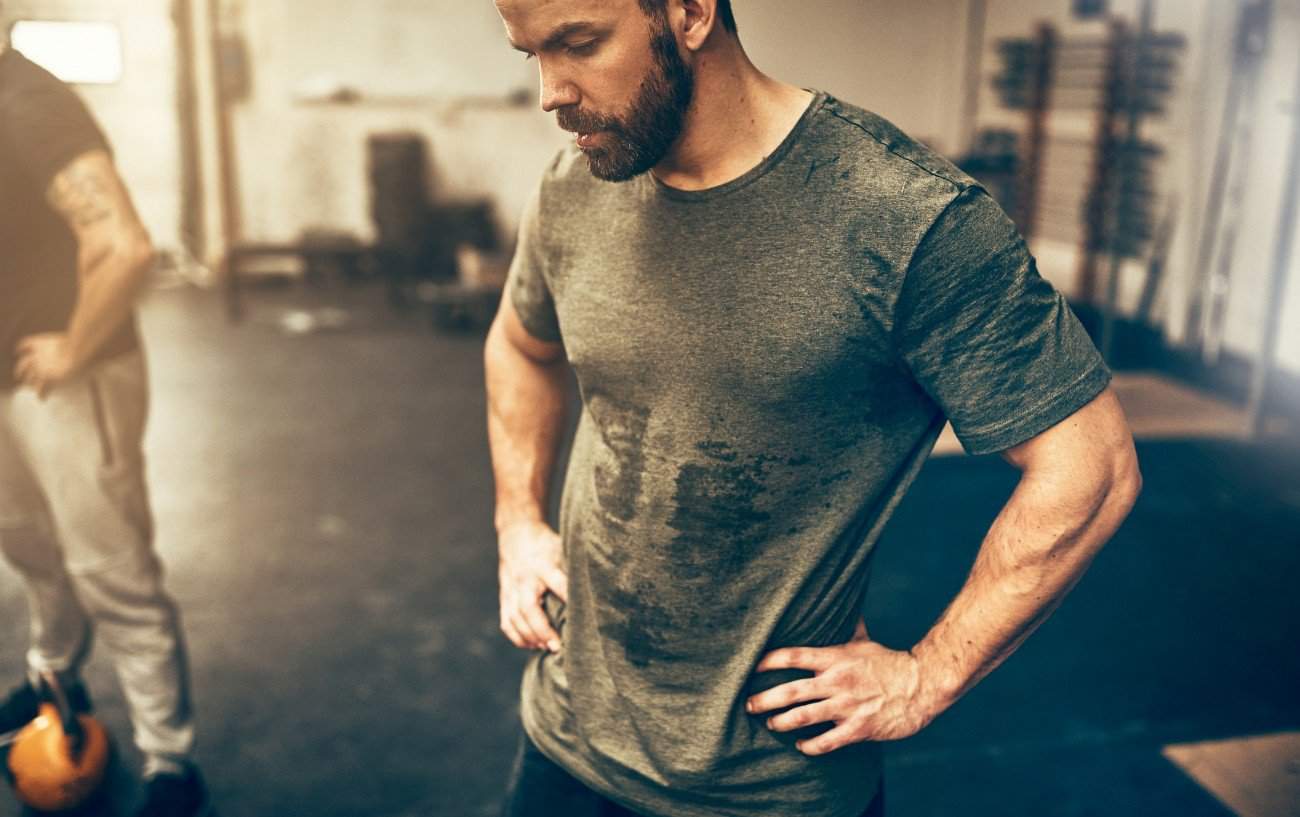Most people gravitate towards one type of exercise or workout.
For example, you might be the type of person who loves running, cycling, or doing some other form of cardio exercise. Or, perhaps you love yoga or gentler activities like tai chi.
Then there are those who focus predominantly on strength exercises or lifting weights.
While all of these types of workouts have their own merits, and one isn’t necessarily “better” than another, the real magic recipe for being healthy and fit from a well-rounded perspective is to do various types of workouts in your exercise routine.
The five main types of workouts to include in a well-rounded training program are aerobic exercise, muscle strengthening, flexibility, balance, and metabolic training.
In this article, we will discuss the different types of workouts and why variety in your exercise routine is important.
We will cover:
Let’s jump in!

What Are the 4 Most Important Types of Exercise?
There are different ways to answer the question, “What are the different types of workouts or exercise?”
Some people answer it by listing different types of physical activity like running, swimming, walking, or lifting weights.
However, while these are different modes of exercise, when fitness professionals talk about the different types of workouts or the different forms of exercises, they are referring to a classification system that describes four main categories of exercise:
The Four Main Categories of Exercise
- Aerobic or Endurance Exercise
- Muscle Strengthening Exercise
- Flexibility and Mobility Exercise
- Balance Exercise
The names for each of these different types of exercise aren’t set in stone, so you will see slight variations in the number and specific labeling for the different types of workouts, but the general schema is usually the same as it is above.
Although these are the four types of exercise recognized by most fitness and health organizations, such as the National Institutes of Health and Harvard Health Publishing.1The 4 most important types of exercise – Harvard Health. (2017, January 13). Harvard Health; Harvard Health. https://www.health.harvard.edu/exercise-and-fitness/the-4-most-important-types-of-exercise
It can also be helpful to add a fifth—Metabolic Training—which can be thought of as a subcategory of Aerobic Exercise, but we believe the case can be made for having it as its distinct type of exercise.
Within each of these four (or five) broad categories, there are many subtypes or specific forms of exercise.
Let’s look at each type of exercise in more detail.

5 Different Types Of Exercise
#1: Aerobic or Endurance Exercise
Aerobic exercise, also called cardio exercise or endurance exercise increases your heart rate and respiration rate.
Aerobic activity improves cardiovascular health and can help prevent diseases such as heart disease, stroke, hypertension, and certain cancers.
Aerobic exercise is also an efficient way to burn calories, which can help you lose weight or maintain a healthy body weight.
Depending on the specific mode of exercise you choose to do, aerobic exercise can also strengthen certain muscles and increase bone density.
So, what are some of the best exercises for cardiovascular health?
Examples of aerobic exercises include running or jogging, cycling, swimming, rowing, brisk walking, hiking, stair climbing, using an elliptical machine, jumping rope, cross-country skiing, and treading water.

#2: Muscle Strengthening Exercise
Muscle strengthening exercise includes any strength training or weight lifting.
Weight training increases muscular strength and endurance, increases the size of your muscles, and can increase bone density.
Performing strength training exercises is not only for athletes. Strengthening the different muscle groups will make you stronger for everyday activities such as carrying bags of groceries, squatting down to pick up a child, or reaching for something high up on a shelf.
Muscle strength has also been found to be a key factor in determining your longevity.2Zhao, M., Veeranki, S. P., Magnussen, C. G., & Xi, B. (2020). Recommended physical activity and all cause and cause specific mortality in US adults: prospective cohort study. BMJ, m2031. https://doi.org/10.1136/bmj.m2031
Strength training is particularly important for older adults because it helps attenuate the age-related decreases in muscle mass, strength, and bone density.
What exercises fall under strength training?
Some common strength training exercises include squats, push-ups, lunges, bench presses, and biceps curls among endless others.
Often, a form of resistance, such as dumbbells, kettlebells, resistance bands, or weight machines, is involved to increase the difficulty of each movement.

#3: Flexibility and Mobility Exercise
Flexibility is important because it preserves your range of motion and reduces the risk of straining a tendon or pulling a muscle.
In addition, having good flexibility ensures you can move as efficiently as possible, which can improve your athletic performance and reduce pain.
For example, having tight hip flexors from sitting all day can compromise your running form and reduce your running economy. It can also increase the risk of lower back pain.
If you work on your flexibility, you will feel more agile and spry, less achy and stiff, and more confident in your ability to perform other types of workouts without injuring yourself.
What are some examples of flexibility exercises?
Examples of flexibility exercises include yoga, stretching (static stretching, dynamic stretching, PNF, etc.), dance, barre, and tai chi,
Mobility exercises include foam rolling and dynamic stretching.

#4: Balance Exercise
Balance training is an often-overlooked type of exercise, particularly for younger adults, yet everyone can benefit from improving their balance—not just aging seniors.
Having good balance prevents the risk of falls and subsequent injuries.
It ensures you can perform activities of daily living and other forms of more vigorous exercise safely and independently.
Examples of balance exercises include tai chi, yoga, pilates, single-leg balance exercises, and stand-up paddleboarding.

#5: Metabolic Training
Again, although not typically viewed as a distinct type of exercise by most fitness and health organizations, metabolic training is also an important aspect of your overall fitness.
Metabolic training could include workouts like high-intensity interval training (HIIT) and circuit training.
In this way, metabolic training pulls qualities from both the aerobic or cardio category as well as strength.
HIIT workouts involve performing bouts of high-intensity exercise followed by short recovery periods. Because HIIT workouts are performed so vigorously, they can be considered anaerobic exercise.
For example, you might structure a HIIT workout on an exercise bike by cycling as hard as possible for 45 seconds and then cycling easy for 30 seconds for 10 repetitions.

HIIT workouts, including the Tabata structure, seem to warrant their own category because they don’t really hit on the endurance note of aerobic training, and they offer unique benefits in terms of your metabolism.
For example, if you perform a steady-state aerobic exercise at about 70% of your VO2 max or max heart rate, you will increase your metabolism and burn calories during the workout, but as soon as you are done exercising, your heart rate and metabolic rates will come back to baseline rather quickly.
In contrast, when you boost your heart rate to the level of 80-100% of your maximum required in HIIT training, you stoke your metabolism so much that it can take up to 14 hours for your metabolic rate to return to resting levels.
Additionally, HIIT workouts can alter your hormonal response relative to lower-intensity exercise and engage both your aerobic metabolic pathways and anaerobic energy systems.
Therefore, high-intensity workouts provide unique benefits that aren’t necessarily obtained by just performing moderate-intensity, steady-state aerobic exercise.
Furthermore, depending on the type of exercise you do for your HIIT workout, there’s a good chance you’re hitting on more of a strengthening note than standard aerobic workouts, blurring the lines between whether the type of exercise you are doing falls within the “Aerobic” or “Muscle Strengthening” category.
For example, if you do all sorts of plyometric exercises and strength training moves in a HIIT-style workout, you build muscle and improve your cardiovascular fitness.

What are the Health Benefits of Exercise and Staying Active?
There are several reasons why having a variety of different types of workouts in your exercise routine is important.
#1: Providing Different Benefits
Although any exercise program has physical and mental health benefits for overall health, the specific benefits you’ll get will depend on the particular type of exercise you perform.
As described above, certain types of workouts won’t really be an effective way to improve certain aspects of your health or fitness.
For example, flexibility training doesn’t usually increase your heart rate, so it won’t strengthen your heart and lungs. Running every day won’t really improve your flexibility; if anything, it will likely make you stiffer.
Therefore, performing a variety of different types of workouts and exercises is the best way to ensure you’re offering your body the different stimuli it needs to cause adaptations in your different body systems and components of fitness.

#2: Reducing the Risk of Injuries
Choosing to do different types of exercise also prevents overuse injuries.
You will use different muscles and movement patterns, which prevents any one tissue from being repetitively stressed or strained in the exact same way every single day.
#3: Preventing Fitness and Weight Loss Plateaus
If you always do the same type of exercise, you’re setting yourself up for a classic case of the Law of Diminishing Returns.
The body is excellent at adapting to what we do day in and day out.
What may be initially a very challenging workout that leads to numerous health and fitness adaptations will become something your body is accustomed to.
Even your metabolism will adjust to your routine, and the energy cost (and thus calories burned) of your workout will decrease.
As a result, over time, you’ll stop seeing as much progress in your fitness and weight loss if you don’t change up your workout routine.
Adding variety to your exercise training can prevent fitness and weight loss plateaus because your body can never get too comfortable or accustomed to your workouts.
The stimulus is always changing, so the adaptation process doesn’t stagnate.

#4: Preventing Boredom
The importance of feeling engaged and motivated to exercise should not be overlooked.
Having a varied workout routine helps prevent boredom because you aren’t doing the same type of exercise day in and day out, so your daily workout will feel different and fresh.
Research has demonstrated that adding variety to a workout program can improve adherence.
How much physical activity do adults need?
The Centers for Disease Control and Prevention (CDC) and the UK Government guidelines for physical activity are that adults should accumulate at least 150 minutes of moderate-intensity or 75 minutes of vigorous-intensity aerobic exercise per week.3Physical Activity Guidelines for Americans | health.gov. (n.d.). Health.gov. https://health.gov/our-work/nutrition-physical-activity/physical-activity-guidelines
The American College of Sports Medicine and the CDC recommend that adults perform 2-3 total-body resistance training workouts weekly.4Garber, C. E., Blissmer, B., Deschenes, M. R., Franklin, B. A., Lamonte, M. J., Lee, I-Min., Nieman, D. C., & Swain, D. P. (2011). Quantity and Quality of Exercise for Developing and Maintaining Cardiorespiratory, Musculoskeletal, and Neuromotor Fitness in Apparently Healthy Adults. Medicine & Science in Sports & Exercise, 43(7), 1334–1359. https://doi.org/10.1249/mss.0b013e318213fefb
Balance and flexibility training should each be included twice per week.
Don’t be afraid to try new types of exercise! They say variety is the spice of life, and it’s the key to being fit and healthy as well.
Looking for some workouts to get you started? Here are a variety to choose from:













